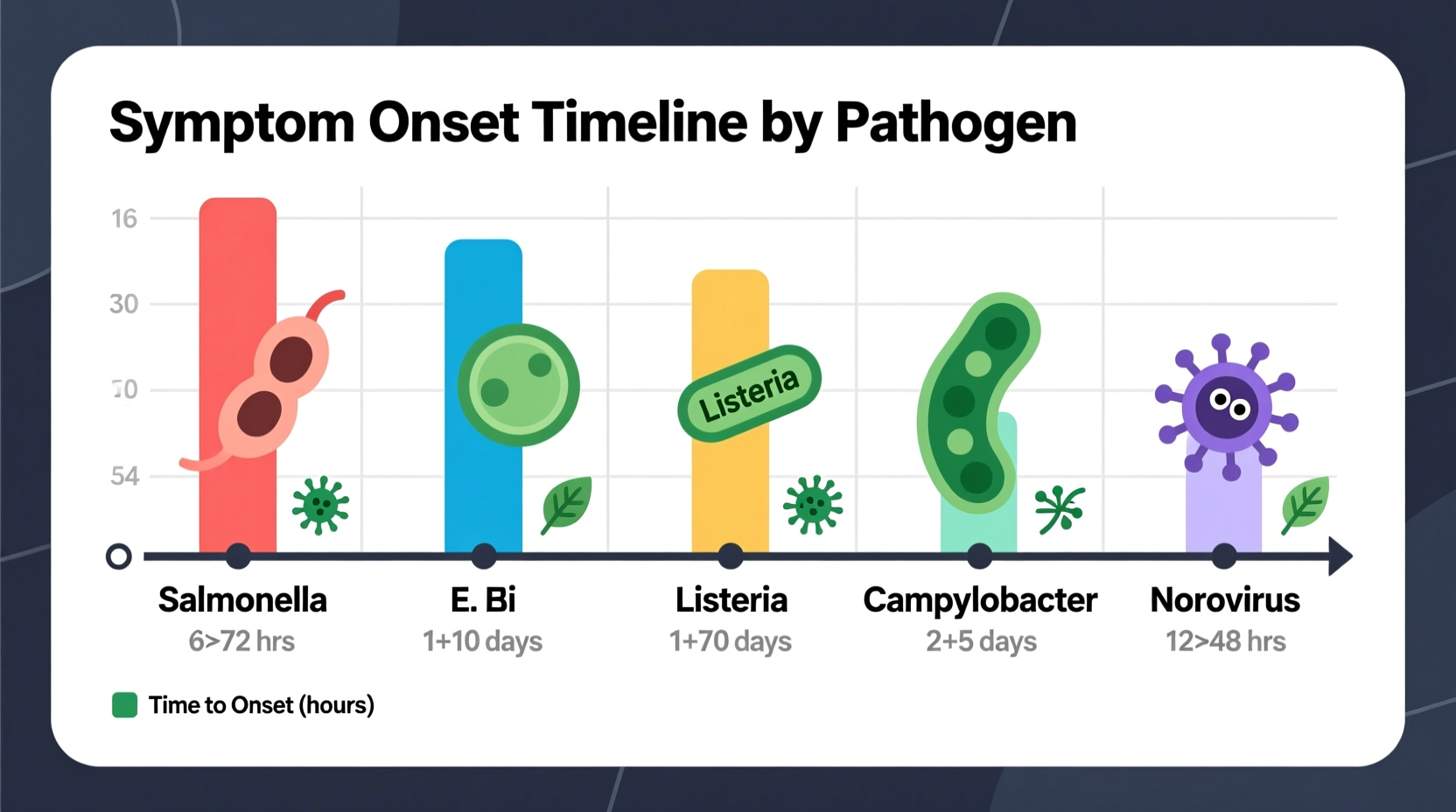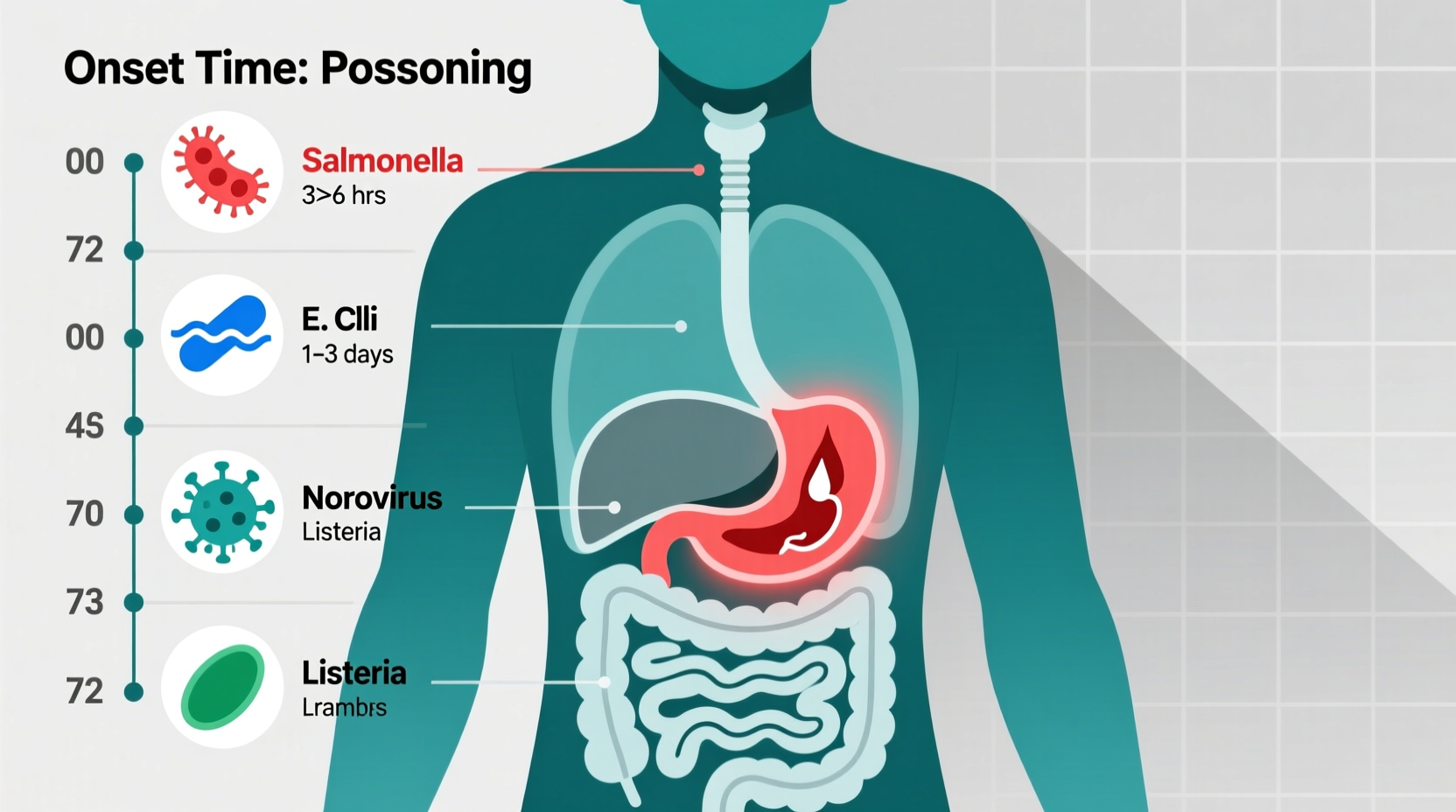If you're reading this while feeling queasy after a meal, you need clear answers fast. Understanding when food poisoning symptoms kick in helps you determine whether to monitor at home or seek immediate medical care. This guide cuts through the confusion with medically verified timelines, actionable response steps, and prevention strategies based on CDC and WHO data.
Urgent Action: If You're Feeling Sick Right Now
When symptoms strike suddenly, your first 2 hours are critical. Here's your immediate action plan:
- Do NOT induce vomiting – This can cause dehydration or esophageal damage (per FDA food safety guidelines)
- Sip small amounts of oral rehydration solution or clear broth every 15 minutes
- Track symptom onset time and progression – Note if you develop high fever (over 101.5°F), bloody stool, or signs of dehydration
- Contact a healthcare provider immediately if you're pregnant, over 65, immunocompromised, or caring for an infant
Food Poisoning Timeline Explained: Pathogen-Specific Onset Windows
The "how long does food poisoning take to kick in" question has no single answer. Different pathogens have distinct incubation periods. This medically verified timeline helps identify potential culprits:
| Pathogen | Typical Onset Time | Common Sources | Symptom Duration |
|---|---|---|---|
| Staphylococcus aureus | 30 min - 8 hours | Deli meats, cream-filled pastries | 1-2 days |
| Norovirus | 12-48 hours | Raw oysters, contaminated produce | 1-3 days |
| Salmonella | 6 hours - 6 days | Undercooked poultry, raw eggs | 4-7 days |
| E. coli (STEC) | 1-10 days (avg 3-4) | Undercooked ground beef, unpasteurized juice | 5-10 days |
| Listeria | 1-4 weeks | Soft cheeses, deli salads | 1-4 weeks |
This CDC-verified comparison shows why timing matters: rapid-onset toxins like Staphylococcus cause symptoms within hours, while bacterial infections like Salmonella take days to multiply to illness-causing levels. Listeria's extended incubation explains why pregnant women might not connect symptoms to food consumed weeks earlier.

4 Key Factors That Change Your Symptom Timeline
Your personal risk profile significantly impacts how quickly food poisoning manifests. These evidence-based variables explain why two people eating the same meal may have different experiences:
1. Pathogen Load and Food Type
Consuming heavily contaminated food (like raw oysters with high norovirus levels) triggers symptoms faster than low-level exposure. Acidic foods (tomato sauces, citrus) may delay Salmonella onset by 12+ hours as bacteria survive stomach acid longer.
2. Individual Health Factors
People with compromised immune systems (per WHO reports) often experience:
- Shorter incubation periods due to reduced pathogen resistance
- Longer symptom duration (up to 2x longer for E. coli in elderly patients)
- Higher complication risks even with "mild" pathogens
3. Age Considerations
Infants and children under 5 show symptoms 20-30% faster than adults according to NIDDK research, with dehydration risks escalating within 12 hours. Elderly patients may have delayed symptom recognition due to reduced immune response.
4. Pre-Existing Gut Health
Those with healthy gut microbiomes often withstand initial pathogen exposure longer. Antibiotic users or IBS sufferers may experience accelerated symptom onset as protective bacteria are depleted.
When to Seek Emergency Care: Critical Warning Signs
Don't wait for symptoms to "run their course" if you notice these red flags within the first 24 hours:
- Diarrhea lasting over 2 days or vomiting beyond 12 hours
- Inability to keep down fluids for 4+ hours
- Symptoms appearing within 2 hours of mushroom or seafood consumption (potential toxins)
- Neurological symptoms like blurred vision or muscle weakness (indicating botulism)
Immediate medical attention is crucial for pregnant women with Listeria exposure – the CDC reports 20% fatality rates in untreated cases.
Preventing Future Episodes: Science-Backed Food Safety
Reduce your risk with these FDA-recommended practices that target common contamination points:
- Cold chain integrity: Keep refrigerators at 40°F (4°C) or below – every hour above this doubles bacterial growth
- Cross-contamination control: Use separate cutting boards for produce and proteins (reduces Salmonella transfer by 75%)
- Cooking temperatures: Verify internal temps with a food thermometer (poultry must reach 165°F/74°C)
- Leftover safety: Refrigerate within 2 hours (1 hour if ambient temperature exceeds 90°F)
Recovery Timeline and When to Resume Normal Activities
Most cases resolve without medication, but know these evidence-based recovery markers:
- Dehydration risk peaks during first 72 hours – monitor urine color (pale yellow = safe)
- Return to solid foods only after 12 hours without vomiting (start with BRAT diet)
- Avoid food preparation for others until 48 hours after symptoms cease (per CDC outbreak protocols)
- Full gut recovery may take 1-2 weeks – reintroduce fiber gradually











 浙公网安备
33010002000092号
浙公网安备
33010002000092号 浙B2-20120091-4
浙B2-20120091-4